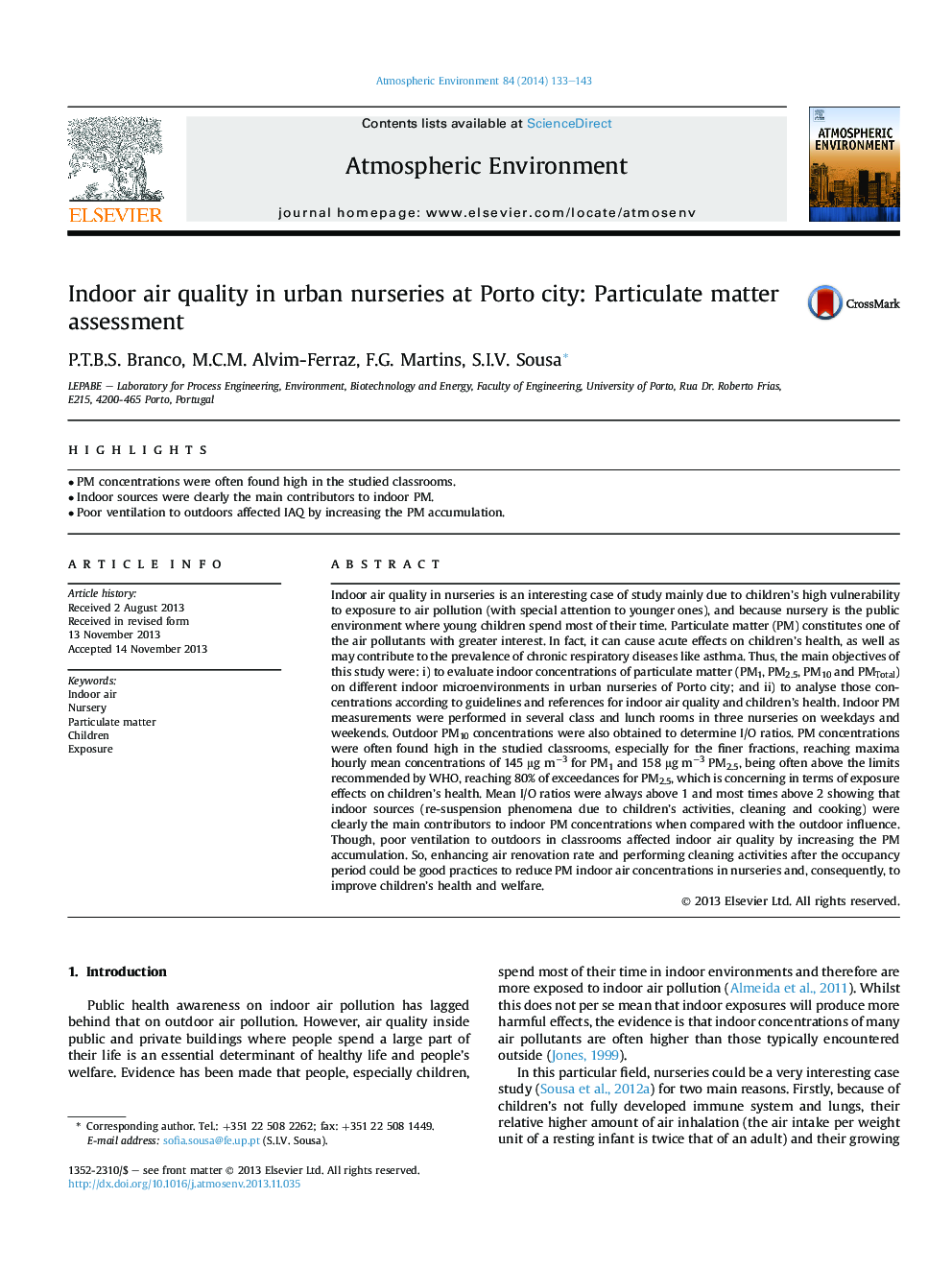| Article ID | Journal | Published Year | Pages | File Type |
|---|---|---|---|---|
| 6341062 | Atmospheric Environment | 2014 | 11 Pages |
Abstract
Indoor air quality in nurseries is an interesting case of study mainly due to children's high vulnerability to exposure to air pollution (with special attention to younger ones), and because nursery is the public environment where young children spend most of their time. Particulate matter (PM) constitutes one of the air pollutants with greater interest. In fact, it can cause acute effects on children's health, as well as may contribute to the prevalence of chronic respiratory diseases like asthma. Thus, the main objectives of this study were: i) to evaluate indoor concentrations of particulate matter (PM1, PM2.5, PM10 and PMTotal) on different indoor microenvironments in urban nurseries of Porto city; and ii) to analyse those concentrations according to guidelines and references for indoor air quality and children's health. Indoor PM measurements were performed in several class and lunch rooms in three nurseries on weekdays and weekends. Outdoor PM10 concentrations were also obtained to determine I/O ratios. PM concentrations were often found high in the studied classrooms, especially for the finer fractions, reaching maxima hourly mean concentrations of 145 μg mâ3 for PM1 and 158 μg mâ3 PM2.5, being often above the limits recommended by WHO, reaching 80% of exceedances for PM2.5, which is concerning in terms of exposure effects on children's health. Mean I/O ratios were always above 1 and most times above 2 showing that indoor sources (re-suspension phenomena due to children's activities, cleaning and cooking) were clearly the main contributors to indoor PM concentrations when compared with the outdoor influence. Though, poor ventilation to outdoors in classrooms affected indoor air quality by increasing the PM accumulation. So, enhancing air renovation rate and performing cleaning activities after the occupancy period could be good practices to reduce PM indoor air concentrations in nurseries and, consequently, to improve children's health and welfare.
Related Topics
Physical Sciences and Engineering
Earth and Planetary Sciences
Atmospheric Science
Authors
P.T.B.S. Branco, M.C.M. Alvim-Ferraz, F.G. Martins, S.I.V. Sousa,
